Dell U3014 LCD Review
by Chris Heinonen on April 15, 2013 2:00 PM ESTI'm not too surprised, but the U3014 sure does calibrate quite well. Using CalMAN 5.1 and targeting the sRGB gamut, 200 cd/m2 of light output, and a 2.2 Power Gamma Curve, we obtained some mighty fine results.
Grayscale performance went from fine to superb. We see almost no colorshift at all in the RGB balance, even down at 0%, and an average CCT of 6551. The Gamma is close to ruler flat with a small bump at 5%, but an overall average of 2.22, and our average grayscale dE2000 is just 0.64. Our contrast dropped slightly to 863:1, but that’s a small sacrifice for this grayscale performance.
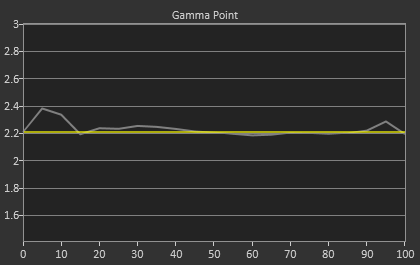
Colors were already good, but with the improved grayscale we dropped the average dE2000 down to 0.90. Color primary and secondary performance is pretty close to perfect here.
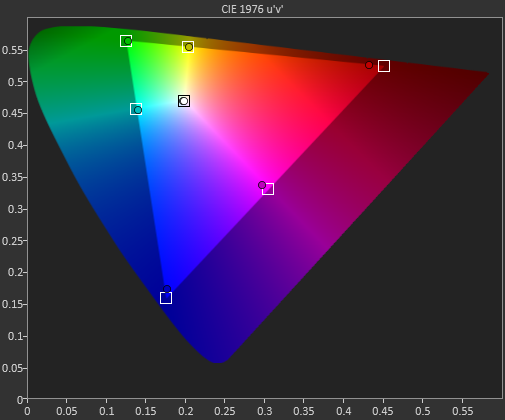
The Gretag chart saw a serious performance increase as well. Our average dE2000 is now 0.73, which means you can’t see any issues with the naked eye at this point. The tiny luminance errors are also totally gone, and if you’re looking for something to complain about on this chart, you’re going to have to keep looking. No error even gets close to 2.0, so this color is practically perfect.
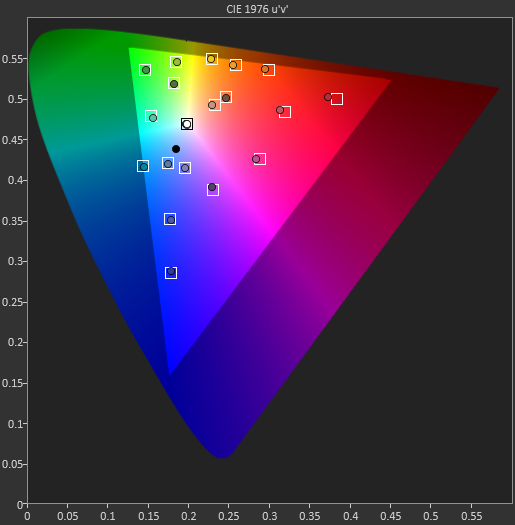
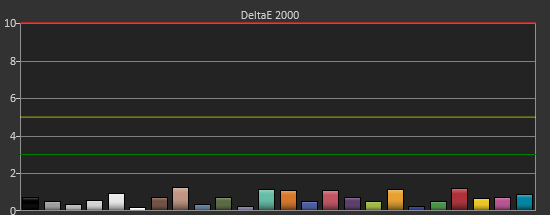

Saturations are just as perfect. Some numbers creep over a dE2000 of 1.0 but very few, and you can’t notice an error that small anyway. Unless you’re measuring with an instrument, it’s going to look perfect.


We also target print and photo applications, and for those we use the sRGB standards: 80 cd/m2 of light, and the sRGB gamma curve. Most of the numbers are directly comparable to the 200 cd/m2 numbers, so I’m going to focus on those that actually changed. First, the U3014 does a very good job of tracking the sRGB gamma curve. We can ignore the number, as unlike power the number varies across the curve, but we want to see how it lines up. The little bit from 0-5% where it doesn’t line up is likely because CalMAN can only measure those 2 points and would need to measure 1%, 2%, 3%, and 4% as well to track the curve better. Overall it tracks amazingly well, so it can do sRGB very easily.
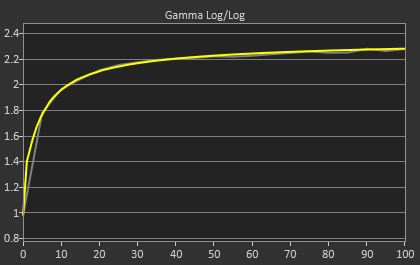
Our color errors are slightly larger, with Red and Blue both being slightly unsaturated in comparison to 200 cd/m2 though the error levels are still very low on average. They just aren’t as exceptional as they were at 200 cd/m2.
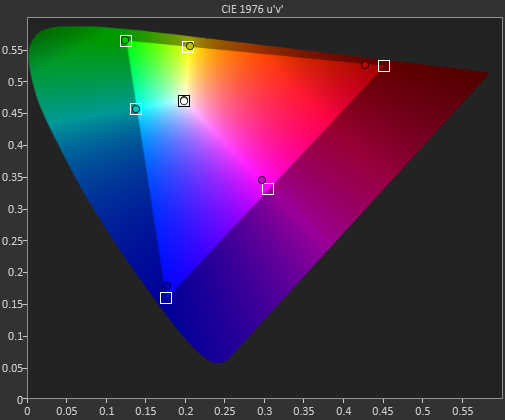
Finally we see that the saturations chart shows slightly more error as well, with some numbers creeping over 2.0 here. Even now they will still only be visible when directly next to the correct color sample, and even then it will be almost impossible to tell. For print and photo work, the U3014 will still work very well; it just seems to perform slightly better at high backlight levels.
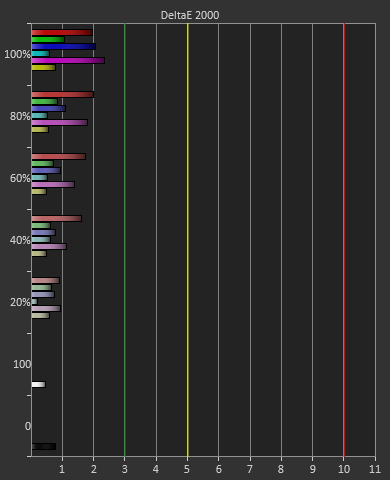


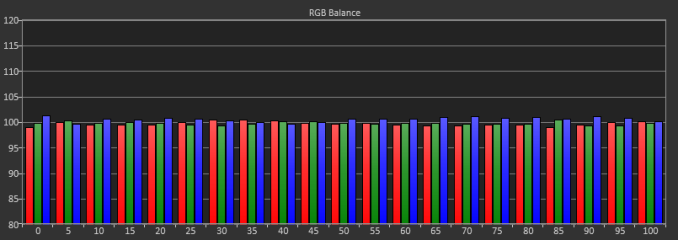
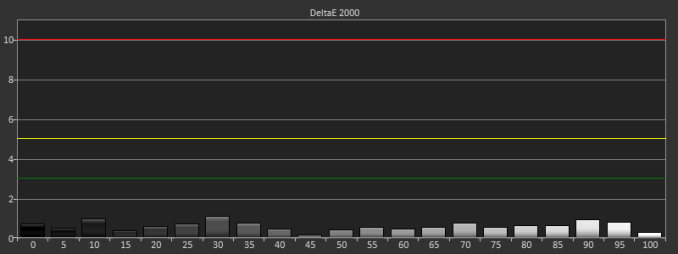











84 Comments
View All Comments
airmantharp - Monday, April 15, 2013 - link
We have four, and they're all 'responsive', but don't go labeling them as 'ergonomic'. Still, since you rarely perform complex settings adjustments after initial setup, they're probably a better choice for longevity over cheap mechanical buttons that may wear out.cheinonen - Monday, April 15, 2013 - link
I didn't test the U3011, but the U2713HM and other Dells that I have tested have had the actual buttons, which I love. I wish they kept it that way, looks be damned.p05esto - Monday, April 15, 2013 - link
Yea, I have the U2713HM and like the phyiscal buttons. I hate all the "touch" controls companies try to shove down our throats. Nothing beats pyysically raised buttons with tactical feedback when pushed. This goes for just about any gadget. Cameras with touchscreens are soooo useless for example.chubbypanda - Monday, April 15, 2013 - link
Aging Dell U2410 also has touch buttons (with motion detection) and real power on/off button. Kind of annoying, but it's bearable. Looks better than physical buttons on U2412M of course (the overall design is better actually).blau808 - Monday, April 15, 2013 - link
I have/had the U3014 and the U2410. The U3014's touch sensitive buttons are anything but. Sometimes it takes 2 or 3 touches to get it to activate whereas on my U2410 I never had a problem with the touch sensitivity. So they changed something that put them a step back from their previous solutions it seems.blau808 - Monday, April 15, 2013 - link
I recently purchased one of these and am now in the process of sending it back. While changing any of the preset mode (game, multimedia, etc) the monitor turns to severe static and artifacting. In standard preset mode, the reds seem to flash on and off turning the screen a bluish tinge before flashing back to normal. I am truly disappointed and keep telling myself thats what I get for being an early adopter. Hopefully the next panel I get wont be a dud.CSMR - Monday, April 15, 2013 - link
Excellent to see continued progress in monitors.One question is why the review focused more on sRGB and AdobeRGB modes than Standard? The usual advice is to always have the monitor on Standard and let Windows do all the color conversion.
cheinonen - Tuesday, April 16, 2013 - link
If you use Standard mode, you aren't certain what the gamut that its using is (probably a larger one than sRGB), and then you're dependent on Windows to manage colors, which means you need to have both an accurate ICC profile, and every application to be ICC aware. sRGB will force the monitor to use the proper gamut for 99% of things (very little properly uses AdobeRGB, but for those people that need it, it's essential) and you don't need to have Windows and the applications be ICC aware.CSMR - Tuesday, April 16, 2013 - link
Getting this monitor and using sRGB would be a real waste. People who buy monitors like this know that they want a wide gamut and precise calibration. Yes there are some applications that are not color aware and give wrong colors on a calibrated monitor, but 1. these applications are not color critical or else they would be ICC aware, and 2. the gamut would be right as that is done via a global setting (LUT) in the graphics driver.cheinonen - Thursday, April 18, 2013 - link
And that's why there are multiple calibration modes available that you can save, as well as included software that will switch the display between those modes when working in the correct application. So if Photoshop requires AdobeRGB and Premiere needs sRGB, you can have the monitor switch on-the-fly between those two.Of course, if the included calibration software worked better, so you could have more accurately calibrated modes saved to the CAL1 and CAL2 presets, that feature would work even better.